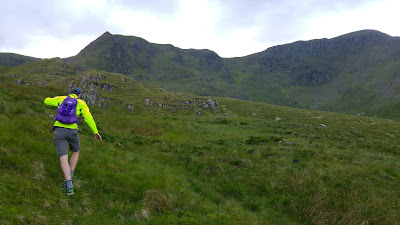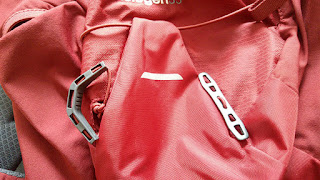One of the classic walks on Dartmoor is the 'Belstone Round' - a looped walk from Belstone into some of the best areas of scenery on the moor.
The Belstone Round is incredibly flexible but is basically a route from Belstone, over the Belstone tors to Oke Tor, on to Steeperton Tor, over to Hound Tor, Little Hound Tor, Cosdon Hill and back to Belktone village. Where, yes, there is a pub which serves indoors and outdoors in Summer months. There's also an amazing cafe next to the chapel.
For a variation, I extended the route to take in the well named Wild Tor. You could easily extend the walk by going from Oke Tor to Hangingstone Hill, then to Wild Tor (and bypass Steeperton Tor). However, that extension has less interest and variation than the one in this blog - in my view!
Distance of walk - approximately 16km
Start Point - SX621938
Suggested Maps - Dartmoor 1:25 OS Map OL28 / Harvey Superwalker XT25 Dartmoor North
Time Taken - 4 to 5 hours, depending on fitness, speed, route, group and number of stops!
 |
| Click for a much larger map |
Starting from Belstone village, you're directed to park in the car park just outside of the main village. This is the best place to park and advised. However, there are other places to park in the village if this is busy, some of which are secrets to locals!
For my route I walked up the hill and started the route at SX616936 where the road goes uphill past a South West Water treatment place. Through the gate and onto the open Moorland. As you walk up the hill following the path, Belstone comes into view, as do several other tors like Rowtor and West Mill Tor (both to the SW of you).
 |
| Some of the (potential!) all-round views on the walk |
As you start to go down hill, on your left at SX612928 comes the Nine Stones Cairn Circle, a small circle of cairns with a radius of around 2m. Many people just walk past this but it's worth a quick look.
From here, I headed up onto the Belstone Tors where there is a semi 'scramble' (I use the word lightly) across the rocks, starting with 'Tors End', across Belstone Tor(s), after which there is a further short slope down to Higher Tor (with a couple of short vertical climbs on). The aim is to stay on as much rock as possible over the tors, although I wouldn't recommend climbing on Higher Tor unless you're experienced and capable.
Continue along the track towards the sprawling mass of rocks that make up One Tor, passing by a couple of outcrops of rock on the way.
 |
| The view back (north) towards Belstone Tor |
Finally you reach One Tor itself, which is a good place for a quick brew. Across to the West you can see East Mill Tor. If you'd like a shorter route, this is a time to head along that track, up to East Mill Tor, then north along the track past Hartor Farm, back down along the path to the ford and back up the path to Belstone.
 |
| The path back to |
But back to Oke Tor...
 |
| On Oke Tor, looking south with Steeperton Tor in the distance |
After playing on the rocks on Oke Tor, head south along the very clear path which will pass West of Steeperton Tor and past Taw Marsh (in the large valley on Dartmoor to your East - I once found a car abandoned here but that's another story...) As you reach Steeperton (SX619883), you can take a quick trip under the small un-named tor to the West.
 |
| Un-named sheep on un-named tor... |
Otherwise it's time to head down the steep-ish slope into Steeperton Gorge. Bear in mind that after heavy rain, it will prove tricky to cross the River Taw if it's in spate. (Alternatively you can continue down the path to the 'Ford' south-west of Steeperton Tor and cross there).
 |
| Steeperton Gorge - it is much steeper than the photo shows! |
At the bottom you'll need to climb back up the fairly steep gradient up to Steeperton Tor where you'll find an army hut - often useful to protect from the fierce SW winds that can rage.
 |
| Top of Steeperton (Oke Tor left, Belstone in distance) |
From Steeperton, you have the option to follow a slightly marked track down to Steeperton Brook (SX622886) and shorten the route by going directly to Hound Tor via a couple of paths (often boggy).
The route I took, however, continues the walk following the SE path from Steeperton (quite wide as used by army vehicles) to the brook to cross (SX620881). You can then take a bearing up to Wild Tor. Strangely this is one of my favourite tors on the moor, lesser visited. (The other one is on another walk, Shelstone Tor, SX558898)
There is an unmarked path up to Wild Tor. Great views across the moor in 360 from Wild Tor.
 |
| Wild Tor (north side) |
From Wild Tor, take the path to the south direct to Hound Tor. Then from Hound Tor, take the path north(ish!) towards Little Hound Tor. Just SE of the tor is the Stone Circle which is quite wide and with numerous and varied shaped cairns dotted around in a circle.
This path has some of the best views of Dartmoor as you get 360 views for long distances and can see all the major tors in this part of the Moor. You can see towns and valleys in the distance, sweeping hills, rolling tracts of moorland, wild ponies and just feel alone in the wilds at times.
Sadly I can't find my images of the Stone Circle but it's worth visiting. So here's the view just after that looking south...
 |
| Yes Tor far left, the highest proper 'tor' on Dartmoor |
The views continue as you head from Little Hound Tor up onto the top of Cosdon. This is quite a peaty and marshy, boggy area with a wide path,. At times it can feel like a bit of a slog but it's again a different terrain and you gradually find your way up to the top of Cosdon Hill. The top is marked by a huge stone 'graveyard' and a couple of shelters to again chill with a cuppa from the SW winds! Believe me, you'll appreciate it.
From here you follow the path down the hill from Steeperton. You can see the wind farm to the NE as you walk in the distance. You'll get some more great views across to Belstone.
While you can follow the path all the way down, there is also a 'tree' off to the NE as you descend the final part of Cosdon in and around SX640926). I love this tree, surrounded by boulders and it's a favourite stopping point of mine.
From here you want to find your way down to the Cairn (SX635932)
 |
| Cairn (or 'Ken' as someone once called it) |
From here, follow the path West all the way across to the footbridge over the River Taw (SX621933). The last time I did this walk, the Gorse was flowering and putting on an incredible display. Then it's back up into the village green area via the path. Next stop the pub, the coffee shop or back to your car.
Enjoy.
 |
| The gorse in full bloom - looking across to the Green in Belstone village |










































